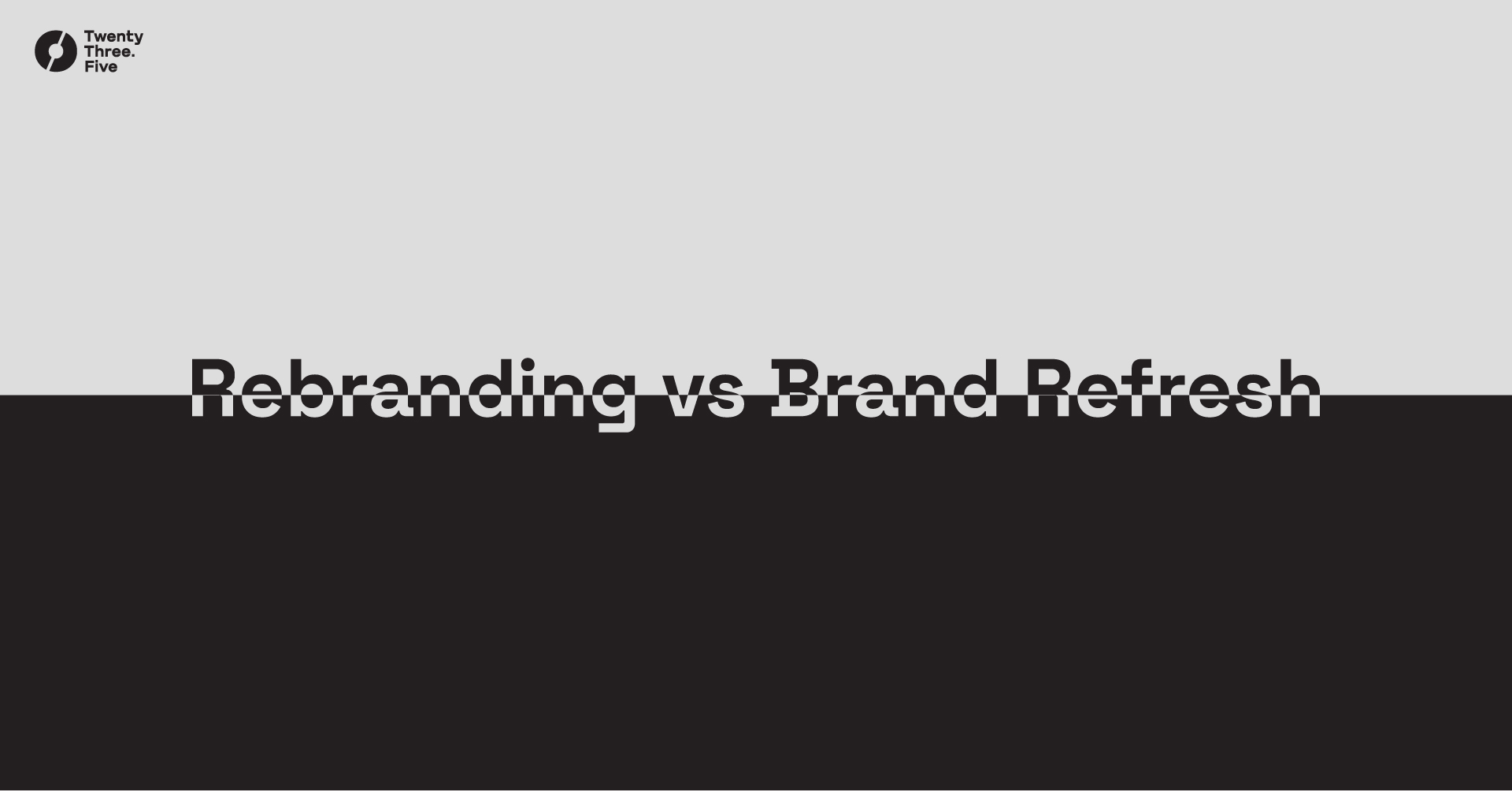
Branding is the soul of your business—a dynamic entity that evolves alongside your growth, audience, and industry. It’s not uncommon for brands to reach a point where change becomes necessary, but the question is, what kind of change should you pursue? Rebranding and brand refresh are two distinct strategies to rejuvenate your brand. Today, we’ll delve into the differences and explore when it’s time for a change, highlighting newer and smaller brands that have successfully navigated these waters.
Understanding Rebranding
Defining Rebranding
Rebranding is a profound transformation of your brand’s identity, encompassing everything from the logo and visual elements to messaging, values, and strategic positioning. It’s a comprehensive overhaul that aims to reposition the brand, reach a new audience, or revitalize an outdated image. Rebranding signals a fundamental shift in the brand’s core identity.
When to Choose Rebranding
When it’s time for a complete rebrand:
Significant Shift in Values: If your business undergoes a fundamental shift in values, such as a change in mission or commitment to sustainability.
Patagonia, the outdoor clothing company, rebranded to place sustainability at the forefront of its identity. This transformation highlighted its commitment to environmental activism, resonating with eco-conscious consumers.
Reaching a New Audience: When you want to capture a new audience that your current brand doesn’t effectively reach.
Glossier, a cosmetics brand, rebranded to appeal to a younger, more diverse audience. The brand’s relatable approach to beauty has struck a chord with millennials and Gen Z consumers.
Merger or Acquisition: When two companies merge or one acquires another, rebranding often streamlines the identity under a single cohesive brand.
Asana, a project management software, underwent rebranding following a merger. This strategic move helped unify its brand image and positioning in the competitive tech industry.
Understanding Brand Refresh
Defining Brand Refresh
A brand refresh is a subtler approach, focusing on enhancing specific visual and messaging elements while maintaining the brand’s core identity. It’s like a fresh coat of paint—making your brand look more contemporary without altering its essence. A brand refresh is often chosen when the core values and mission remain constant, but the brand needs a modern facelift.
When to Choose a Brand Refresh
When it’s time for a brand refresh:
Modernization: If your brand’s visual elements, such as the logo and color scheme, feel outdated.
Slack, the communication platform, refreshed its logo and brand design to better reflect its modern and collaborative nature, keeping the core brand identity intact.
Messaging Tweaks: When your brand’s messaging no longer effectively resonates with your audience or needs to reflect a slight shift in focus.
Mailchimp, an email marketing platform, refreshed its brand messaging to emphasize that it’s more than just email marketing. The refresh helped communicate its broader suite of marketing services.
Digital Presence Improvement: If your website or digital assets require a user-friendly, modern design without a complete rebrand.
Airbnb, the vacation rental platform, refreshed its website to enhance user experience, making it more intuitive and appealing to both hosts and guests.
Factors Influencing the Decision
Market and Industry Changes
When to consider a change due to market and industry shifts:
New Market Trends: When emerging trends require adapting to stay competitive.
Peloton, a fitness technology brand, quickly adapted to the rising trend of at-home fitness during the COVID-19 pandemic, expanding its brand reach in the process.
Industry Disruption: If an industry undergoes major disruption, rebranding may be necessary to address the changing landscape.
Zoom, the video conferencing platform, rebranded to accommodate its sudden prominence during the pandemic, repositioning itself as a trusted platform for remote communication.
Audience Evolution
When evolving audience expectations demand a change:
Demographic Shifts: Adapting to the preferences and expectations of a changing customer demographic can be a trigger for rebranding.
Warby Parker, the eyewear company, resonated with millennial consumers by offering stylish, affordable eyeglasses and a socially responsible mission.
Generational Preferences: For younger generations like millennials and Gen Z, relatable, socially conscious brands are often more appealing.
Competitive Landscape
When competition prompts a need for repositioning:
Staying Relevant: Evolving your brand to stay relevant in a crowded marketplace is crucial.
Allbirds, a sustainable footwear brand, continually innovates to compete with major players in the footwear industry, emphasizing sustainability and comfort.
Rising Competition: When new competitors enter the market, your brand may need a refresh to maintain a competitive edge.
MeUndies, an underwear brand, continually refreshes its product offerings and branding to stand out in the competitive apparel industry.
Mergers and Acquisitions
When mergers or acquisitions are involved:
Streamlining Identity: Merging or acquiring companies may need rebranding to unify under a single brand identity.
Evernote, a note-taking app, unified its brand following an acquisition, ensuring a seamless experience for users.
The Process of Rebranding and Brand Refresh
Rebranding Process
The rebranding process involves comprehensive steps, including research, strategy development, design, and implementation. It’s a journey that starts with a clear vision and strategy.
Brand Refresh Process
A brand refresh process is streamlined. It involves evaluating existing brand elements and making updates while maintaining core brand recognition.
Our Capabilities
We offer branding and design services ranging from small design updates for social media all the way to full blown brand development. The rebranding process and brand refresh process are both encompassed by our flagship branding offerings Orbit and Odyssey.
Success Stories
Mozilla Firefox: Mozilla rebranded to better reflect its commitment to online privacy and security, gaining a more distinct position in the competitive web browser market.
Pinterest: Pinterest refined its brand, making it more inclusive and visually appealing, driving higher user engagement and growth.
Foursquare: Foursquare underwent a brand refresh to pivot from a check-in app to a location data and technology company, successfully adapting to market changes.
Dropbox: Dropbox’s brand refresh aimed at simplifying its visual elements and messaging, achieving a cleaner and more modern brand image.
Making the Decision
The decision to rebrand or refresh should not be made lightly. It’s a critical juncture in your brand’s journey, and professional expertise is invaluable in making the right choice. Consulting with branding experts like TwentyThree.Five can help assess your unique situation and recommend the most suitable strategy for your brand.
Paving the Way for Change
In the world of branding, change is inevitable, but the path you choose should align with your brand’s goals and the ever-evolving landscape. Whether it’s a complete rebrand or a brand refresh, the ultimate goal is to ensure your brand remains relevant, resonates with your audience, and sets you on a trajectory for long-term success.
For expert guidance on rebranding and brand refresh decisions, schedule a mission. Let’s navigate the journey of brand evolution together.


